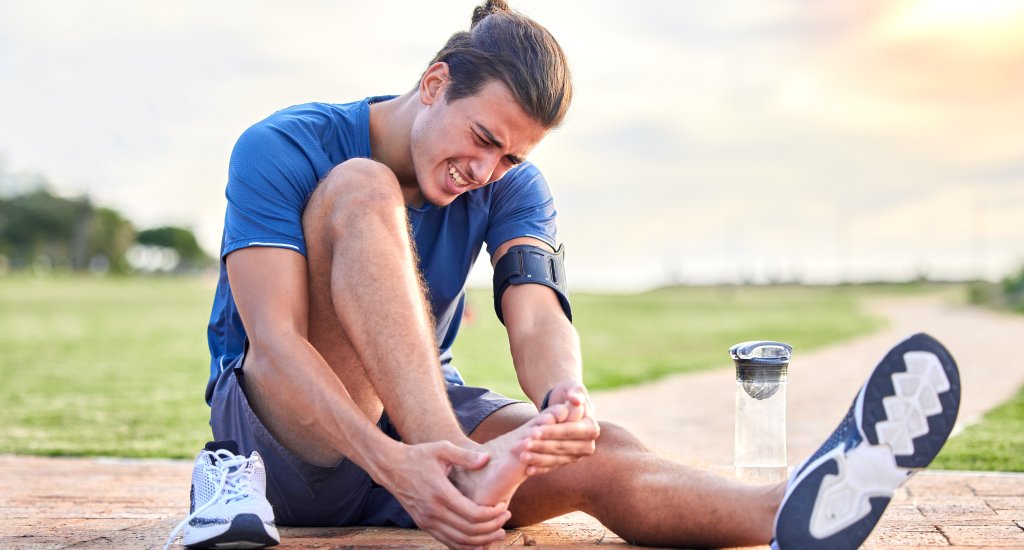Running
Common running injuries and how to solve them

Running And Sports Injuries
Regular jogging, though a relatively low-impact exercise, demands a certain level of physical effort and endurance. When engaging in this cardiovascular activity, individuals experience repetitive movements, leading to a consistent impact on weight-bearing joints such as the knees, hips, and ankles.
As a weight-bearing exercise, running places stress on bones and muscles, thereby contributing to improved bone density and strengthening the lower body musculature. Jogging engages various muscle groups, including the quadriceps, hamstrings, calves, and core, promoting overall strength and toning.
It is essential for runners to maintain proper form, adequate hydration, and gradually increase their intensity and duration to minimise the risk of injury and fully benefit from the physical demands of this invigorating exercise.

Solve Your Running Injury Today
Book now with one of our qualified therapists who are ready and waiting to help solve your running injury.
Book AppointmentCommon Running Injuries
Here are some of the most common running injuries we see at the Horsham Sports Injury Clinic
Runner's Knee (Patellofemoral Pain Syndrome)
This injury occurs due to irritation of the cartilage on the underside of the kneecap. It can result from overuse, muscle imbalances, weak quadriceps, or improper tracking of the patella as it moves during running.
Shin Splints (Medial Tibial Stress Syndrome)
Shin splints are characterised by pain along the shinbone (tibia). They often occur due to overuse, repetitive stress on the shin muscles and tendons, or improper running form.
Plantar Fasciitis
This injury involves inflammation of the plantar fascia, a thick band of tissue that runs along the bottom of the foot. It can happen from overuse, excessive pronation (inward rolling of the foot), tight calf muscles, or wearing improper footwear.
Achilles Tendonitis
Achilles tendonitis is the inflammation of the Achilles tendon, which connects the calf muscles to the heel bone. It can result from overuse, sudden increase in training intensity, improper footwear, or tight calf muscles.
IT Band Syndrome
IT band syndrome occurs when the iliotibial band, a thick band of tissue that runs along the outside of the thigh, becomes inflamed. It often arises from overuse, repetitive bending and straightening of the knee, or muscle imbalances.
Stress Fractures
Stress fractures are small cracks in the bone, commonly seen in weight-bearing bones of the legs and feet. They usually occur due to overtraining, sudden increase in mileage or intensity, or running on hard surfaces.
Ankle Sprains
Ankle sprains happen when the ligaments supporting the ankle joint are stretched or torn. They can occur from stepping on uneven surfaces, landing awkwardly, or wearing improper footwear.
Hamstring Strain
A hamstring strain is a partial tear or overstretching of the hamstring muscles at the back of the thigh. It may happen due to inadequate warm-up, overstriding, or muscle imbalances.
Patellar Tendinitis (Jumper's Knee)
This injury involves inflammation of the patellar tendon, which connects the kneecap to the shinbone. It can result from repetitive jumping or running activities, inadequate rest, or tight quadriceps.
At Home Treatment Options
Here are some at-home exercises that can help prevent running injuries
Hip Strengthening Exercises: Clamshells
- Lie on your side with knees bent and feet together
- Lift your top knee while keeping your feet together
- Lower it back down
- Repeat for 10-15 repetitions on each side
Hip Strengthening Exercises: Glute Bridge
- Lie on your back with knees bent and feet flat on the floor
- Lift your hips off the ground, squeezing your glutes
- Lower back down
- Repeat for 10-15 repetitions
Core Stability Exercises: Planks
- Start in a push-up position with your elbows resting on the ground
- Keep your body in a straight line from head to toe, engaging your core
- Hold for 30-60 seconds
Core Stability Exercises: Russian Twists
- Sit on the floor with your knees bent and feet lifted off the ground
- Lean back slightly and rotate your torso from side to side, touching the floor with your hands
- Do 10-15 twists on each side
Calf Strengthening Exercises: Calf Raises
- Stand with your feet hip-width apart and rise up onto your toes, lifting your heels off the ground
- Lower back down
- Repeat for 15-20 repetitions
Calf Strengthening Exercises: Single-Leg Calf Raises:
- Perform the same movement as calf raises, but do it on one leg at a time
- Repeat for 10-15 repetitions on each leg
Ankle Stability Exercises: Alphabet Ankle Exercise
- Sit on a chair with one foot lifted off the ground
- Trace the letters of the alphabet with your toes, moving your ankle in different directions
- Repeat with the other foot
Ankle Stability Exercises: Balance Exercise
- Stand on one leg and hold the position for 30-60 seconds
- Repeat on the other leg
- To make it more challenging, close your eyes or stand on an uneven surface like a folded towel
Hamstring Stretch
- Sit on the floor with one leg extended straight and the other bent with the sole of the foot against the inner thigh
- Reach forward toward the toes of the extended leg
- Hold for 20-30 seconds and repeat on the other side
Quadriceps Stretch
- Stand on one leg and bring the other heel towards your buttocks, holding your ankle with your hand
- Hold for 20-30 seconds and switch to the other leg
Foam Rolling
- Use a foam roller to target your major muscle groups, such as calves, thighs, and glutes
- Roll slowly over each muscle group to release tension and promote muscle flexibility
Testimonials
Hear What Our Patients Say



